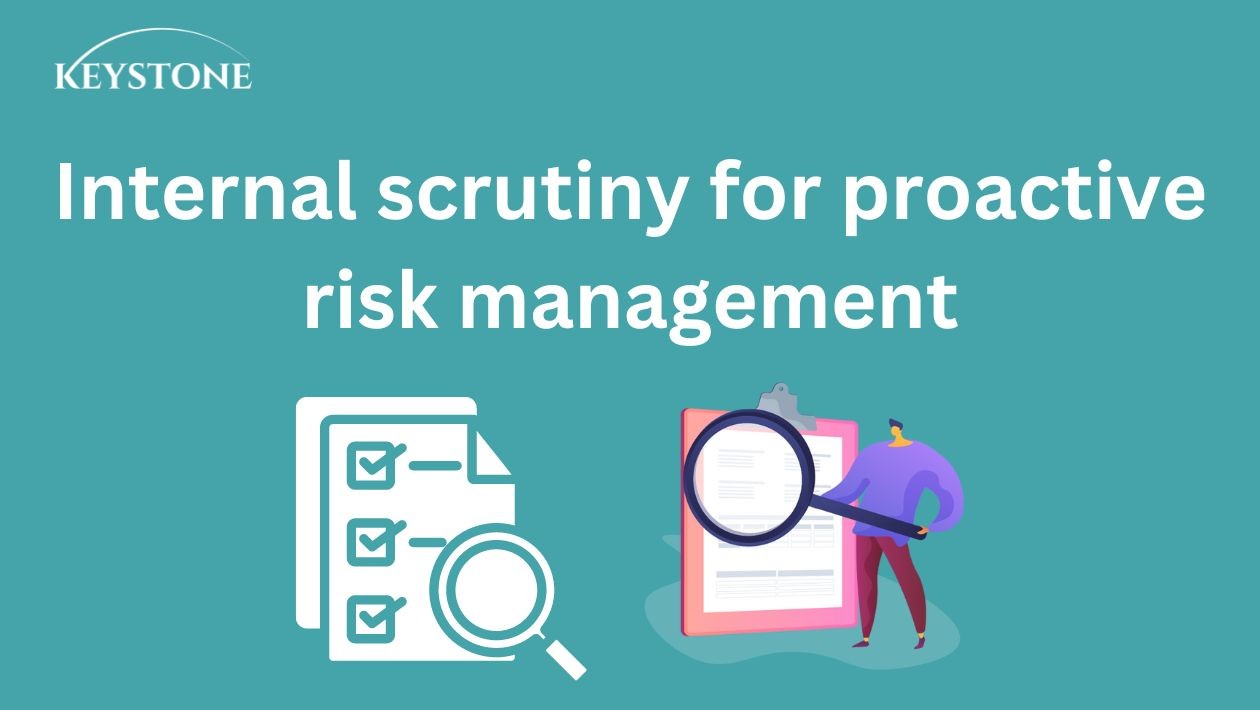Internal scrutiny for proactive risk management
Internal scrutiny plays an essential part in managing risks in schools and trusts, but whilst traditional methods focus primarily on ensuring compliance with regulations and internal procedures, they often fall short in identifying and addressing hidden risks that lurk beneath the surface. This blog aims to delve deeper into the imperative of enhancing internal scrutiny practices to unveil these hidden risks and foster a culture of proactive risk management and continuous improvement within multi-academy trusts.
Exploring hidden risks:
Before delving into the strategies for enhancing internal scrutiny, it's crucial to understand the diverse nature of hidden risks that may evade traditional scrutiny methods. These risks encompass not only tangible issues such as financial irregularities and statutory non-compliance but also intangible factors such as organisational culture, strategic misalignment, stakeholder relationships, and change management dynamics. Neglecting these 'softer' issues can pose significant threats to the trust's integrity, reputation, and long-term sustainability.
Evolving scrutiny practices:
To effectively address hidden risks, multi-academy trusts must evolve their internal scrutiny practices beyond traditional checklists and compliance-focused approaches. A better solution is a holistic and proactive approach that integrates both quantitative and qualitative assessments and provides a more comprehensive view of the trust's operational health.
Comprehensive Risk Assessment:
Enhanced internal scrutiny begins with a comprehensive risk assessment that goes beyond financial metrics to encompass cultural, strategic, and operational risks. This assessment serves as the foundation for identifying and prioritizing areas of vulnerability within the trust.
Stakeholder Engagement:
Engaging with a diverse range of stakeholders, including staff, parents, local authorities, and community partners, is essential for gaining insights into potential risks and opportunities. By fostering open communication channels, trust leaders can proactively address concerns and build stronger relationships that contribute to risk mitigation efforts.
Continuous Monitoring and Improvement:
Internal scrutiny should not be viewed as a one-time exercise but rather as an ongoing process of continuous monitoring and improvement. Regular reviews, feedback mechanisms, and performance evaluations are essential for identifying evolving risks and adjusting strategies accordingly.
Conclusion:
In conclusion, the ability to uncover hidden risks and proactively manage them is vital to protect the ability of multi-academy trusts to deliver outstanding education to their pupils or students. By enhancing internal scrutiny practices to encompass a broader spectrum of risks and adopting a proactive approach, trust leaders can strengthen their organizations' resilience and adaptability in an increasingly complex educational landscape.
Find out about Keystone Knowledge's holistic approach to providing internal scrutiny services here.
When you subscribe to the blog, we will send you an e-mail when there are new updates on the site so you wouldn't miss them.

